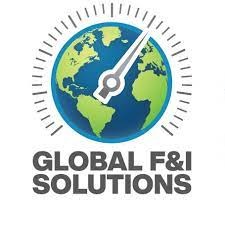
Mercedes-Benz Takes a Stand: Absorbing Tariff Costs to Keep Prices Steady
The automotive industry is experiencing seismic shifts due to President Donald Trump's 25% tariff on imported vehicles, a policy introduced on April 3, 2025. The provocative measure aims to reshape trade dynamics and has triggered an array of reactions among manufacturers globally. While the policy has the potential to inflate vehicle prices significantly, Mercedes-Benz has chosen a unique path. The German automaker has announced its intention to absorb these tariff costs rather than pass them on to its consumers.
Understanding the Impacts of Tariffs on the Automotive Market
The increase in tariffs is prompting automakers to reassess their strategies in the U.S. market, which could include raising prices or shifting production methods. For consumers, these adjustments could mean paying several thousand dollars more for their vehicles. However, Mercedes-Benz stands out with its commitment to maintaining price stability for its 2025 model year cars, a decision that can bolster customer loyalty in an unpredictable market.
The Competitive Edge of Domestic Production
Unlike brands that are heavily reliant on imports, Mercedes has a significant advantage due to its domestic production capabilities. Models like the GLE-Class, GLS-Class, and the electric EQE and EQS SUVs are assembled in Alabama. This domestic base not only mitigates the risk from tariffs but allows Mercedes to remain competitive against rivals like Audi and JLR, which are currently evaluating their approach, including potential price hikes on imported models.
BMW’s Strategic Alignment with Mercedes
Following Mercedes' proactive decision, BMW has also indicated plans to absorb some tariff costs on select models produced in Mexico. This strategy reflects a broader trend among automakers to adjust their pricing strategies in response to the new tariff landscape, with significant production facilities like BMW's Spartanburg plant in South Carolina giving them the flexibility needed to maintain competitive pricing.
Future Predictions: Tariffs and the Auto Industry Landscape
The long-term implications of these tariffs could lead to a seismic shift in the automotive industry. Companies may pivot significantly if domestic production becomes a prerequisite to maintaining low pricing. With consumer preference shifting and economic pressures mounting, brands that adapt quickly will likely thrive, while those that hesitate may falter under the weight of increasing costs.
Actionable Insights: Navigating the Tariff Landscape
As dealerships and consumers brace for the ongoing effects of these tariffs, it is vital to explore options for financing and acquiring vehicles. Understanding current used car financing rates and how they can affect purchasing decisions becomes increasingly important. Consumers looking at the market should evaluate various financing options, such as calculating potential savings with a used auto financing calculator or exploring interest rate dynamics to secure the best available terms.
For dealerships, maintaining competitive pricing amidst rising costs can be a fine balance. This is the moment to rethink inventory and pricing strategically to ensure customer retention through transparency about how tariffs may affect future purchases.
The Bigger Picture: Tariff Effects on Global Trade
The current tariff situation isn't solely about the automotive industry—it's a reflection of larger trends in global trade. How manufacturers respond may not only set the tone for consumer behavior but may also influence future trade negotiations between the U.S. and other countries. Understanding these dynamics can provide dealerships with insights needed to navigate a challenging market landscape.
In conclusion, the automotive sector is at a crossroads. As brands like Mercedes and BMW act to protect their customers from tariffs, the decisions made now could redefine how vehicles are marketed and sold in the U.S. market.
If you want to stay informed about financing options, including used car loan rates and how current market conditions affect your purchasing power, now is the time to engage with your dealership about available financing strategies that work best for you.
 Add Row
Add Row  Add
Add 




Write A Comment